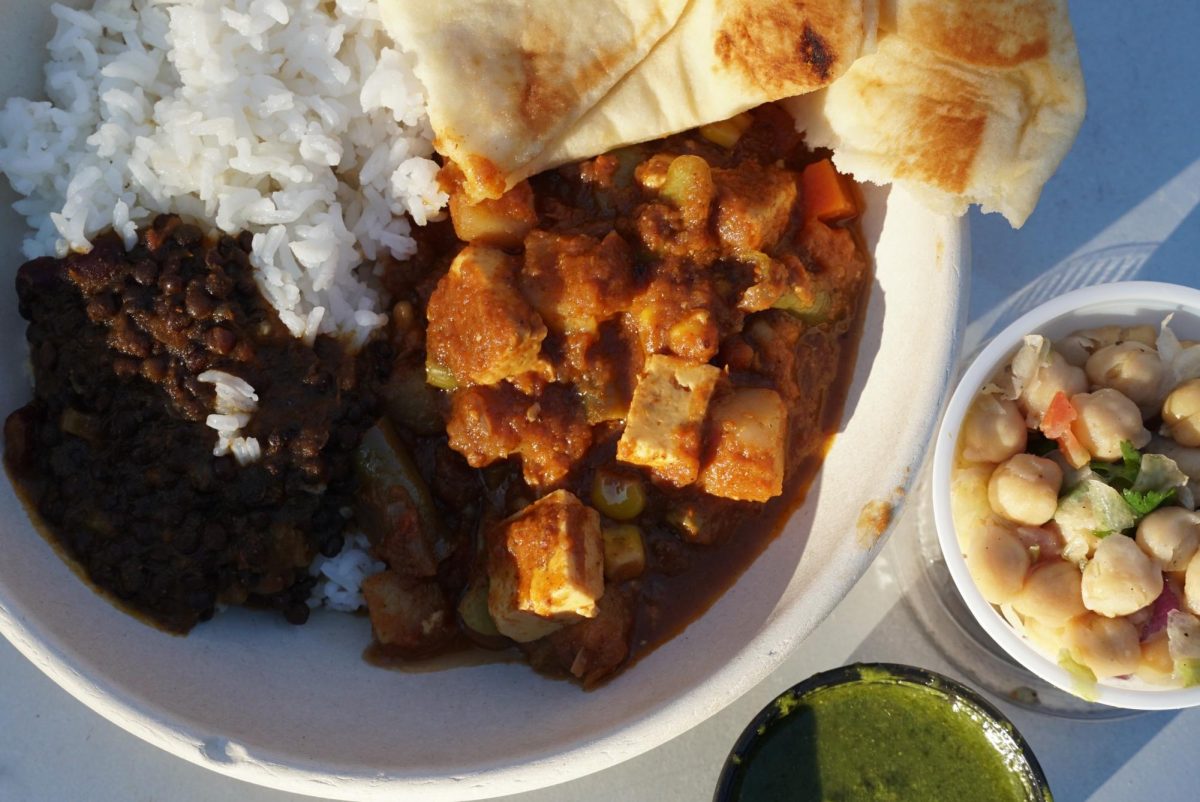Shreya Akula thought Indian food occasionally served on campus often lacked authentic taste. As a graduate student and part-time food service worker, she had an idea: a pop-up at Grand Dining Hall with Indian students as chefs.
The one-time pop-up turned into a weekly occurrence last spring, with long lines and a large following among international students. Its success prompted the student team to plan for a permanent Indian eatery on campus.
This fall, Spice Market opened up, a student-run Indian restaurant at Saint Louis University.
Akula, who now manages Spice Market, worked closely with DineSLU to establish the restaurant. From the start, she said authenticity was at the heart of the vision.
“We really wanted to have that authenticity so students can feel like they are back at home like they’re in their mom’s kitchen,” Akula said.
SLU has seen a significant increase in international students in the past few years. There are more than 1,400 international graduate students this year, 85% of whom are from India.
Indian students like Karthik Mogiliburam say it is comforting to have a meal on campus that reminds them of home.
“We are far away, far away from home, and the one thing we miss a lot is our Indian food,” Mogiliburam said. “This semester we are very much lucky to get the Spice Market opened up for us.”

While Spice Market caters to Indian students, the cuisine shares commonalities with the culinary traditions of other South Asian countries like Nepal and Pakistan and appeals to a range of students.
Madeline Erdman, DineSLU’s marketing coordinator, has been working closely with the student team running the restaurant. When Spice Market first opened up, Erdman said she was worried the spice level might be too bold, but she’s been surprised with the positive feedback.
“The reaction was honestly really incredible to hear because there were so many students who just loved it. They absolutely loved it,” Erdman said. “And people actually liked that it was a little spicy.”
Abdul Rahman Shaik, a graduate student and chef supervisor at Spice Market, said it is not always easy to accept people from different countries or appreciate their cultural foods. He said he is proud students are willing to try and enjoy Indian cuisine.
“If [I] cook something and the people like the food, then it’s gonna give me the most happiness. I’m feeling so excited and feeling so happy to be part of it,” Shaik said.
From its inception as a pop-up to its growth now as a restaurant, this has been a student-run operation. Sourcing authentic ingredients like black cardamom and chickpea flour is important to the team, but campus production chef Brian Horrocks said that has been harder than expected.
“Sourcing some of these products in St. Louis — we’re not New York or Miami — we’re trying to get authentic items from far away places to the middle of Midwest, so we’re doing what we can,” Horrocks said.
Horrocks, who has a background in Indian cuisine, has been guiding the student team with inventory and ordering. He said since the restaurant opened in August, they have all been learning from each other as they overcome sourcing and cooking challenges.
“It’s something new, and it’s exciting to be student-run. The students are really excited about what they’re doing,” Horrocks said.
The menu lineup includes a range of classic Indian dishes including basmati rice, daal (lentils), chicken curry and naan bread. There are also a few vegetarian items like chickpea salad and pakora, a vegetable fritter coated with chickpea flour and fried till golden brown.
“Pakora is one of the favorite snacks for every Indian and that’s going to be very famous on the campus,” said Yash Yegurula, who works as a cashier at Spice Market.
Curating and managing a new restaurant was not in Akula’s post-graduation plans. Through food, Spice Market helps to “fill a gap” for international students on campus, she said.
“Spice Market is more than a dining experience,” Akula said. “It’s a cultural bridge that brings people from all corners of the world together through the universal language of food.”





